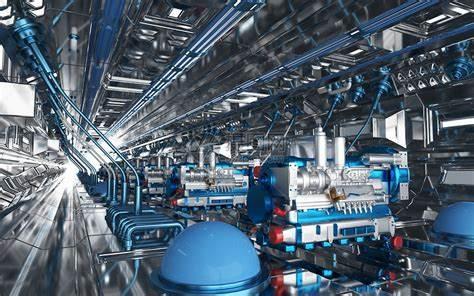In today’s fast-paced world of advanced machinery, accuracy, durability, and efficiency are no longer optional—they are essential. At the core of many precision-driven applications lies a quiet but powerful component: the cross roller bearing. This compact yet robust piece of engineering is redefining performance standards across industries such as robotics, medical devices, semiconductor equipment, and aerospace systems.
Unlike conventional bearings, a cross roller bearing is designed with cylindrical rollers placed perpendicular to each other in a crisscross arrangement between the inner and outer rings. This design provides exceptional load-bearing capability in a smaller footprint, supporting radial, axial, and moment loads with superior stiffness and rotation accuracy. These unique characteristics are why cross roller bearings are becoming a preferred choice for equipment that demands reliability and smooth motion under heavy loads.
One of the biggest advantages of using cross roller bearings is their ability to maintain precision under high-speed and high-load conditions. In robotic arms, for instance, cross roller bearings enable joint mechanisms to move with pinpoint accuracy and minimal backlash. The same applies to CNC machinery and optical equipment, where even the slightest deviation can lead to costly errors or inefficiencies. By incorporating these bearings into the system, manufacturers can drastically enhance equipment lifespan and performance consistency.
Another key reason for their growing adoption is their compactness. Space is often a limiting factor in modern designs, especially in compact medical imaging devices or portable industrial tools. The structure of a cross roller bearing eliminates the need for multiple bearings in a single location, streamlining design and reducing weight without compromising on functionality. This makes them ideal for high-performance applications where every millimeter counts.
Additionally, cross roller bearings boast excellent rigidity. This is critical in systems where vibration and deflection can undermine operational integrity. Their ability to resist deformation ensures stable, predictable movement, which is crucial in automated systems requiring 24/7 operation with minimal maintenance. Industries are increasingly drawn to this benefit as downtime and repair costs become more significant concerns.
The reliability of a cross roller bearing also extends to its maintenance needs. With the correct sealing and lubrication, these bearings can operate for extended periods without degradation. This lowers the total cost of ownership over time and supports sustainable engineering practices by reducing waste and replacement cycles.
Yuwei Bearing, a precision-focused manufacturer, has recognized the potential of this bearing technology and committed itself to advancing the performance of cross roller bearing solutions. By combining high-grade materials, stringent quality testing, and advanced production techniques, manufacturers like Yuwei are setting a new benchmark in the global bearing market.
In summary, the cross roller bearing is more than a trend—it is a transformative innovation that aligns perfectly with modern engineering demands. From enhancing accuracy in robotic movements to optimizing structural efficiency in compact systems, its impact is wide-reaching. As industries continue to push the boundaries of precision and performance, the importance of investing in high-quality cross roller bearings will only grow stronger. Whether you’re building the next breakthrough in automation or looking to upgrade your current systems, choosing the right bearing can make all the difference—and cross roller bearings are proving to be that difference-maker.



